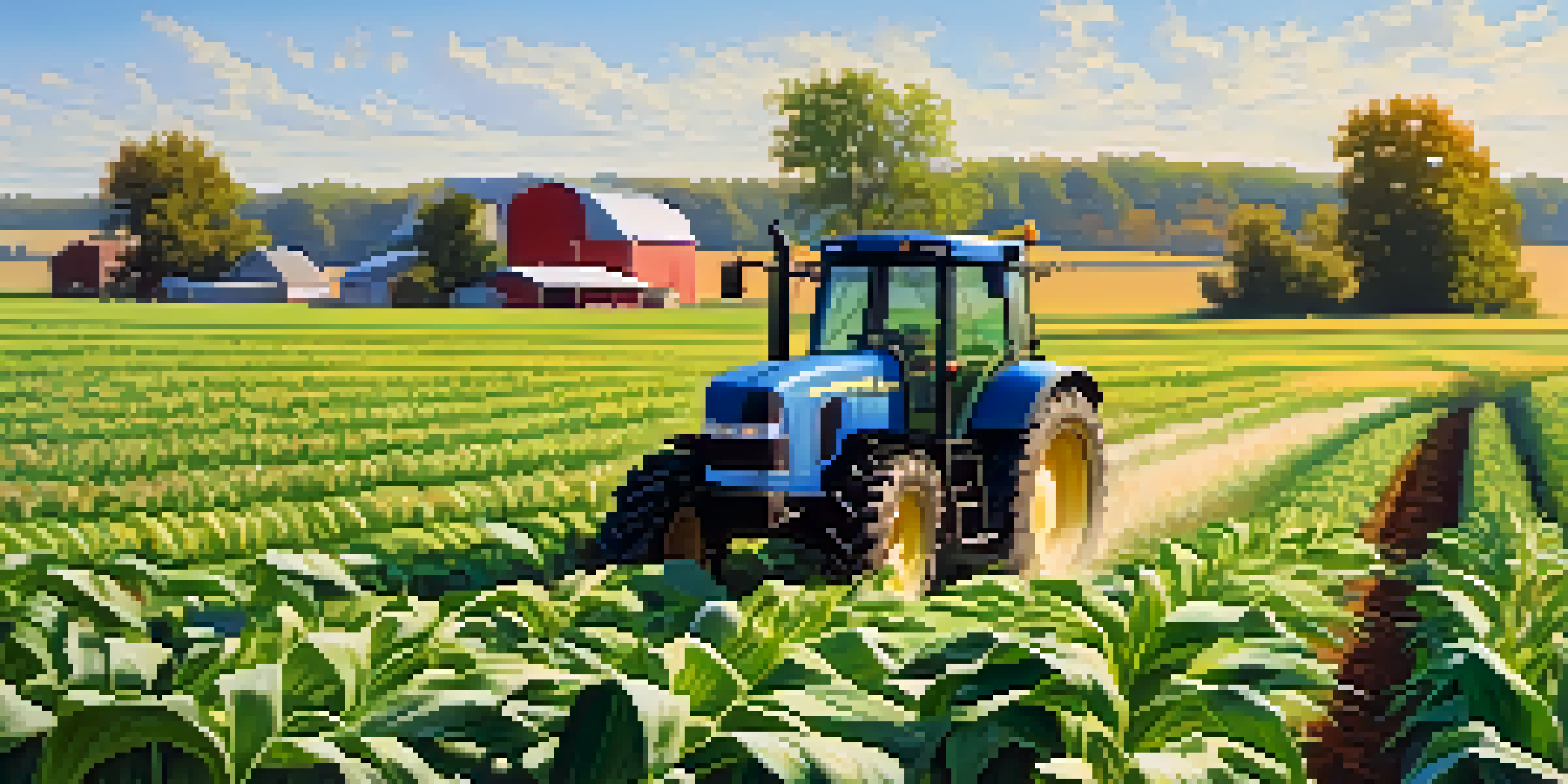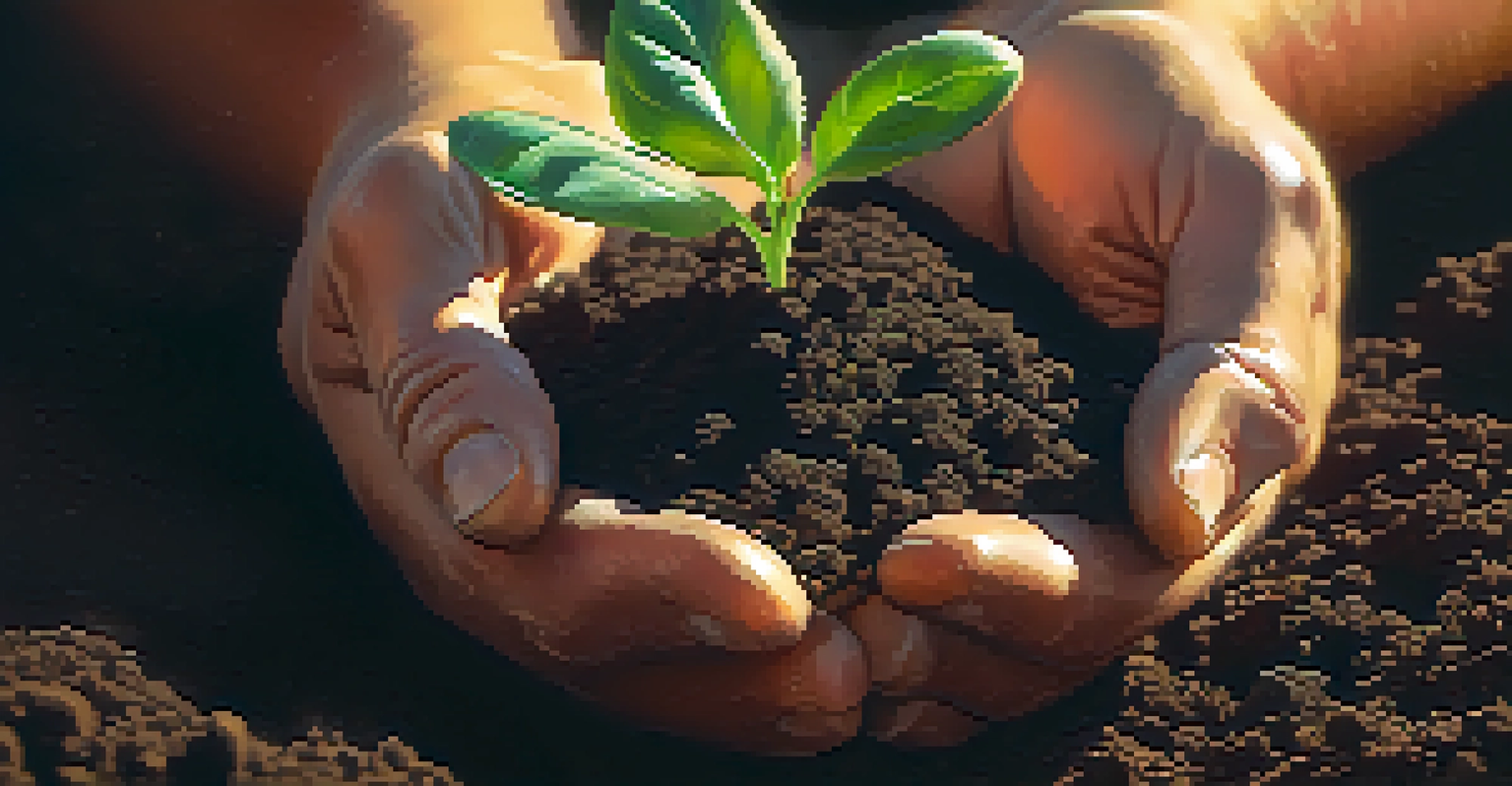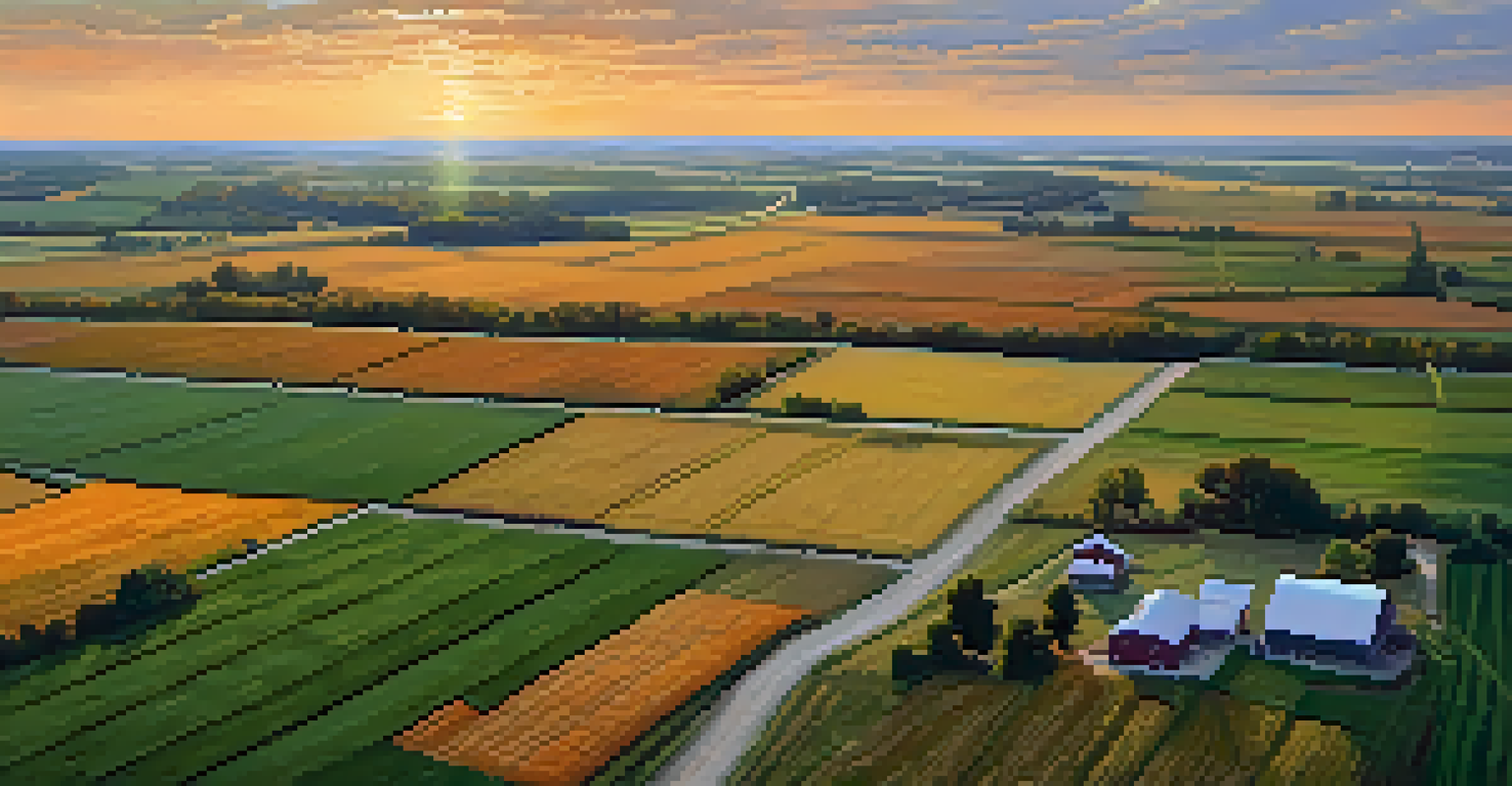The Role of Agriculture in Illinois' Economic Landscape Today

Illinois Agriculture: A Historical Perspective
Illinois has a rich agricultural history, dating back to its early settlements. The fertile soil of the Midwest made it a prime location for farming, leading to the establishment of numerous farms and agricultural practices. This legacy has shaped the state's economy and culture, making agriculture an integral part of its identity.
Agriculture not only gives riches to a nation, but the only riches she can call her own.
Over the decades, Illinois has evolved from small family farms to large-scale operations, showcasing advancements in technology and farming methods. These changes have not only increased productivity but also transformed how agriculture is perceived within the state. Today, Illinois ranks among the top states in agricultural production, particularly in corn and soybeans.
Understanding this historical context helps clarify the importance of agriculture in today's economy. It serves as a reminder of the resilience and adaptability of farmers who have continuously worked to meet the growing demands of a changing market.
Key Agricultural Products in Illinois
Illinois is often referred to as the 'Corn State,' producing more corn than any other state in the U.S. This crop is not only vital for food production but also for biofuels and livestock feed, making it a cornerstone of the local economy. Soybeans also play a significant role, with Illinois being one of the top producers worldwide.

Beyond corn and soybeans, Illinois farmers cultivate a variety of other crops, including wheat, pumpkins, and fruits. This agricultural diversity helps to buffer the economy against market fluctuations in any single crop. Specialty crops and organic farming are also on the rise, reflecting changing consumer preferences and increasing demand for sustainability.
Illinois Agriculture's Economic Impact
Agriculture contributes approximately $9 billion annually to Illinois' economy, supporting jobs and local businesses.
These products contribute significantly to Illinois' economic landscape, generating billions in revenue and supporting thousands of jobs. The agricultural sector also fuels related industries, from processing and transportation to retail and export.
Economic Contributions of Agriculture
Agriculture is a powerhouse for Illinois' economy, contributing approximately $9 billion annually. This figure represents not just the sale of raw agricultural products, but also the value added through processing, distribution, and retail. It’s a multi-faceted sector that sustains a wide range of jobs and businesses.
Farming is a profession of hope.
A vibrant agricultural sector has a ripple effect throughout the economy. For instance, when farmers purchase equipment, seeds, or fertilizers, they support local businesses and create jobs. Additionally, agricultural exports bring money into the state, further stimulating economic growth.
Moreover, agriculture helps maintain rural communities by providing employment and supporting local services. The interconnectedness of agriculture with other sectors reinforces its position as a vital economic driver in Illinois.
Employment and Job Creation in Agriculture
Agriculture in Illinois supports over 400,000 jobs, making it one of the largest employers in the state. These jobs range from those directly on farms to roles in agriculture-related industries such as manufacturing, transportation, and retail. This broad employment base highlights the essential nature of agriculture in maintaining the state’s economic health.
Additionally, the sector encourages entrepreneurship. Many individuals are starting ag-related businesses, such as organic farms, agritourism ventures, and food-processing companies. These new enterprises not only create jobs but also offer innovative products and experiences for consumers.
Key Products Drive State Economy
Corn and soybeans are the primary agricultural products, significantly boosting revenue and job creation in Illinois.
As the agricultural landscape evolves, so do the opportunities for employment and career growth. With advancements in technology and sustainable practices, the demand for skilled workers in agriculture is on the rise, positioning the sector for continued success.
Technological Innovations in Agriculture
Technology plays a crucial role in modernizing agriculture in Illinois. Innovations such as precision agriculture allow farmers to utilize data to optimize crop yields and resource use. Drones, GPS, and sensors are now commonplace on farms, enabling more efficient farming practices.
These technological advancements not only improve productivity but also promote sustainability. For instance, using data analytics helps farmers monitor soil health and water usage, reducing waste and environmental impact. This shift towards sustainable farming is increasingly important in today’s eco-conscious market.
Embracing technology in agriculture also opens doors for new career paths in fields like agronomy, engineering, and data science, contributing to the overall economic landscape of Illinois. As technology continues to advance, so will the potential for innovation within the agricultural sector.
Challenges Facing Illinois Agriculture
Despite its strengths, Illinois agriculture faces several challenges that could impact its future. Climate change poses significant risks, affecting crop yields and farming practices. Unpredictable weather patterns can lead to droughts or floods, which threaten the stability of food production.
Additionally, market volatility can create uncertainty for farmers, with fluctuating prices for crops and livestock. Trade policies and international competition further complicate the landscape, making it essential for farmers to adapt quickly to remain profitable.
Challenges and Innovations Ahead
Facing challenges like climate change, Illinois agriculture must embrace innovation and sustainability to thrive in the future.
Navigating these challenges requires collaboration and innovation within the agricultural community. By working together and investing in research, farmers can develop strategies to mitigate risks and ensure a resilient agricultural sector in Illinois.
The Future of Agriculture in Illinois
Looking ahead, the future of agriculture in Illinois appears promising but will require adaptability and innovation. As consumer preferences evolve, there is a growing demand for locally sourced and organic products. This shift presents opportunities for farmers to diversify their operations and meet new market needs.
Sustainability will also be a key focus area. Many farmers are increasingly adopting practices that enhance soil health, conserve water, and reduce chemical usage. These efforts not only benefit the environment but also align with consumer values, potentially increasing market demand for sustainably produced goods.

By embracing change and investing in new technologies, Illinois agriculture can continue to thrive. The sector's ability to adapt to challenges will be crucial in maintaining its vital role in the state's economic landscape.